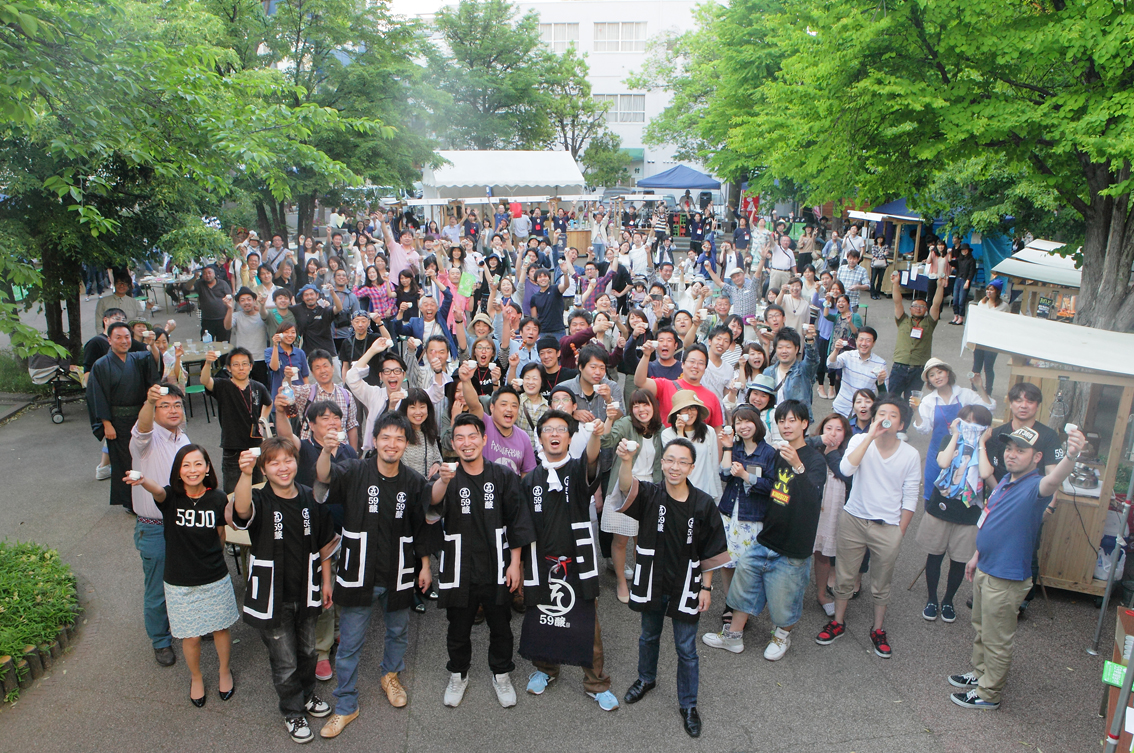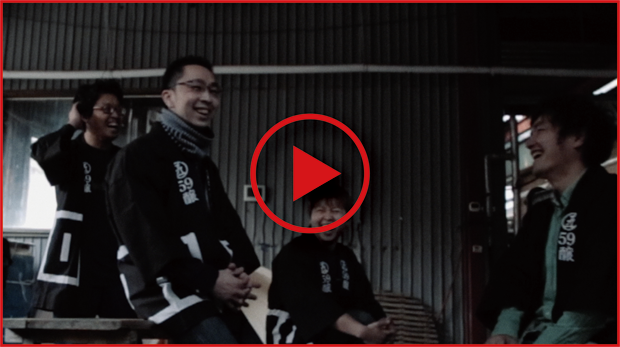
長野県の日本酒
日本のなかでも山岳地域に位置する長野県。3,000m級の山々に降る雪が、春には清流となって田畑を潤し、豊かな暮らしの礎となっています。日本酒も、清冽な水とたわわに実る米という自然の恩恵を受け、人の手によって醸される産物です。現在、長野県の酒蔵は75。その数は全国2位を誇ります。古くから漬物などの発酵食品や甘辛い食が多い長野県では、それに合わせて甘くてしっかりとした味わいの日本酒が多い傾向にあります。とはいえ、南北212km、東西120kmに県域が広がり、かつ地域によって標高差もあるうえに、食の多様化や酒造りの技術の進化も相まって、長野県内でも個性あふれる日本酒を楽しめるようになってきています。
The Sake of Nagano Prefecture
Nagano Prefecture is located in one of the most mountainous regions of Japan. Spring transforms the snow that falls on its 3,000-meter peaks into clear streams that nourish fields and paddies and form the cornerstone of an abundant life. A product of human hands, sake reaps the benefits of this natural environment in the form of cool, clear water and plentiful rice. Currently there are 75 breweries in Nagano, the second most of any prefecture in Japan. Nagano’s long tradition of salty-sweet cuisine and fermented foods fostered a preference for sake that was sweeter and more robust. The prefecture’s broad land area (212km north-south and 120km east-west) and regional variations in elevation, though, together with the evolution of both eating habits and sake-making techniques, mean you can now enjoy a wide variety of Nagano-made sake that brims with personality.

長野県の日本酒造りは循環型の産業です
長野県の酒造りの工程では、むだになるものがほとんどありません。飯米が10%程度磨くのに対して、酒米はときに半分以上が削られてしまうこともありますが、米糠は肥料や漬物の糠床に、米粉は煎餅などに用いられます。新酒の頃から夏頃まで店頭に並ぶ酒粕も、日本酒が生み出す副産物のひとつで、古くから発酵食文化や漬物文化が根づく長野県では、酒粕と糠は大切な調味料。野菜の奈良漬けや粕漬け、肉や魚の粕漬けからはじまり、粕汁や甘酒も定番です。板粕はそのまま天ぷらにしたり、こんがりと焼いて砂糖醤油で食したりと、楽しみ方はさまざま。長野県の日本酒産業は循環型であり、それでいておいしいを実現する産業なのです。
Sake Brewing in Nagano Prefecture Contributes to a Closed-Loop Economy
Very little is wasted in the process of brewing sake brewing in Nagano Prefecture. When table rice is polished, generally about 10% of the outer layer is removed. With sake rice, 50% or more may be removed. This produces rice bran that is used as fertilizer or as a fermenting bed for pickles and rice flour that is used to make products such as rice crackers. The sake lees that appear for sale on brewery shelves beginning in the winter months, when fresh sake is produced, are a byproduct of the brewing process. In Nagano Prefecture, with its deeply rooted tradition of pickling and fermenting, sake lees and bran have long been key components of regional cuisine. Local favorites made with sake lees and bran include Narazuke pickled vegetables, kasuzuke pickled vegetables, meat, and fish, as well as kasujiru sake lees soup and amazake sweet rice drink. Sake lees can also be enjoyed as batter-fried tempura or baked and eaten with a mix of sugar and soy sauce. The sake industry in Nagano contributes to a closed-loop economy while producing delicious sake.

季節に寄り添い、環境を思う
設備の充実により1年中酒造りができる〝四季醸造〟の酒蔵もありますが、長野県の酒蔵のほとんどが冬の寒さを利用した寒造りです。冬から春には新酒や燗酒を、夏にはするりと飲みやすい低アルコールの夏酒、秋にはひと夏を越して熟成させたひやおろしを楽しみます。日本のなかでも四季の変化が明確な長野県では、季節に寄り添う酒造りや日本酒の愉しみ方がよく似合います。長野県に限りませんが酒瓶を洗浄して再利用するのも日本酒業界の通例です。繰り返し使うことで、一度破砕してつくる瓶や、缶、ペットボトルよりも、環境負荷が少ないのです。季節に寄り添い、捨てるものがほとんどない長野県の日本酒産業は、国際社会における共通の開発目標である「SDGs」をも実現している産業です。
One With the Rhythm of the Seasons and Considerate of the Environment
Modern equipment now makes it possible to produce sake in all seasons, but most breweries in Nagano Prefecture make their sake during the cold winter months. Every season offers its own delights, with freshly brewed sake and sake consumed warm enjoyed from winter to spring and smooth, low-alcohol“summer sake”during the warmer months, while autumn brings hiyaoroshi sake that has been aged throughout the summer. Nagano Prefecture has clearly delineated seasons, and its brewing traditions follow the rhythm of this natural cycle in offering great-tasting sake throughout the year. The sake industry in Nagano, as elsewhere, also generally uses bottles that are washed and reused. Reusing bottles has a much lower environmental load than using cans, plastic bottles, or new bottles made from crushed glass. Following seasonal rhythms and throwing very little away, the sake industry in Nagano puts the international community’s social development goals (SDGs) into practice.

59醸が目指すもの
小さな酒蔵が多い長野県では、異なる理想を掲げながらも互いを尊重し、切磋琢磨しながら高品質な日本酒を醸しています。59醸(ゴクジョウ)は、そんな長野県の酒造業界の縮図です。それは、59醸が掲げるコンセプトのひとつ「どれが〝美味い〟ではなく、それぞれの〝好み〟を楽しむ」に表れます。酒蔵それぞれが高みを目指し、飲み手とともに〝お酒のあるしあわせな風景〟をつくりだす。この考え方は、SDGsが掲げる「誰も置き去りにしない」という普遍的な目標にも寄りそうものです。わたしたちは、これからもSDGsの理念に共感し、より優れた日本酒を醸しながら、日本酒業界が、社会が、地球が、長く健全に続くよう努めてまいります。
Gokujo’s Goal
Many of the breweries in Nagano Prefecture are small operations that pursue their own ideals while competing with mutual respect, pushing each other to brew high-quality sake. In this way, Gokujo is a microcosm of Nagano’s sake industry. Indeed, one of the group’s key concepts is“to each his own.”As each member brewery seeks to perfect its own distinctive taste, all share with sake drinkers the desire to create a “shiawase (happy) landscape” in which sake plays a part. This approach is in keeping with the SDGs’ universal goal of “leaving no one behind.” Sympathetic to the principles of the SDGs, as we continue our efforts to brew ever better sake we will work also to ensure the healthy sustainability of the sake industry, of our society, and of our world.


